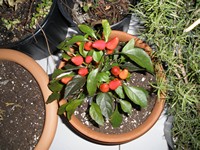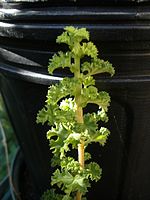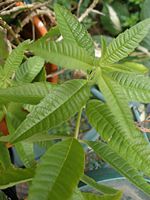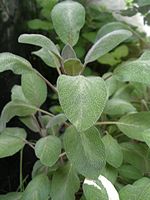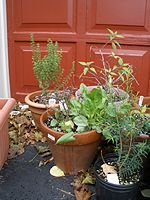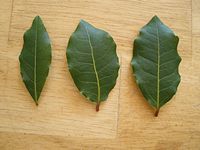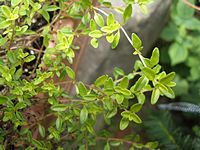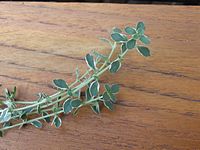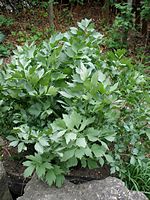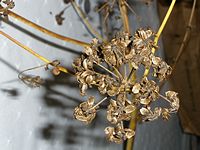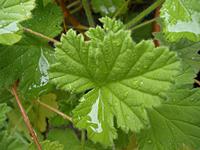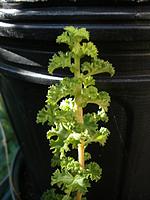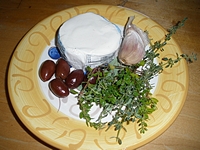 Yes, with minimal effort, you can stock your pantry with dried herbs as you weed your herb garden throughout the season.
Yes, with minimal effort, you can stock your pantry with dried herbs as you weed your herb garden throughout the season.
Every year I seem to go through the same pattern.
In the early summer, I have ever-expanding perennial herb patches, and new volunteer herb plants popping up all over the place. After using some of these herbs fresh, and giving some away, I pull out and compost the most unruly patches. Mostly, I just give up and let the herb plants grow wild wherever they want.
Then, in late summer and fall, I am frantically trying to dry as many varieties of herbs as I can. Most of the herbs I gather are well past their prime at this point. And my house is filled with drying herbs everywhere! So much for harvesting and drying herbs at the peak of their flavour and sweetness.
This pattern repeats itself in my household every year. It’s madness, really.
And why?
Early summer in southern Ontario is full of the madness of spring fever! The intoxicating smells of new growth permeate the air. It’s all about enjoying the moment, the newness and lushness of all this green growth. It’s a time of multiple visits to the garden centres, resulting in seduction and over-buying of many flower, herb, and vegetable plants that must be planted somewhere at some point over the next few days or weeks.
There is absolutely no thought given to preserving any of the over-abundance of volunteer herbs at this time. Harvesting and preserving herbs for the winter is a romantic distant notion, reserved for the fall.
This past summer though, as I was pondering the demise of a vibrant patch of lemon balm that encroached another garden bed and that I had ignored last year, I felt the need to do something with it. I knew I had to pull the lemon balm out, or it would completely take over. Disheartening to pull out such a healthy and vibrant herb patch of lemon balm, but it had to be done.
As I sat looking at the pile of lemon balm that I had torn out, I snipped a few choice branches to make lemon balm tea. Normally, I would toss the remainder of the pulled herbs (often lemon balm, mint, and oregano) into the compost. I had given up on saving them for later, because later never came and the herbs I saved would end up slimy in my fridge and composted anyway.
I figured I would go through the pile of lemon balm and clip some more choice branches anyway.
I brought the lemon balm sprigs into the house, rinsed them immediately (I knew I wouldn’t do it later), and lay them out to dry on a tray lined with parchment paper after shaking off the water and gently patting the leaves dry. Whatever fit on one tray – nothing more.
The fresh young lemon balm dried beautifully, and I packed the dried leaves away for the winter. I left the parchment lined tray out.
Throughout the summer, as I was weeding or picking herbs for use in the kitchen, I would harvest extra every now and then and lay it out to dry on that same parchment.
I wasn’t overly diligent. But over the course of the summer weeks, I have accumulated a nice stash of dried herbs for the winter.
If you prefer to freeze your herbs, freezing in small batches throughout the summer works just as well.
Now that it’s autumn, my house is not filled with an unmanageable array of drying herbs all over the house – my family is thrilled. And, I’m enjoying seeing my little stash of dried herbs tucked away in paper bags, waiting to be pulled out on a cold winter’s day.
Drying herbs in small batches throughout the summer was so much easier than the big-batch drying I had done in previous years. And the quality of the dried herbs is better.
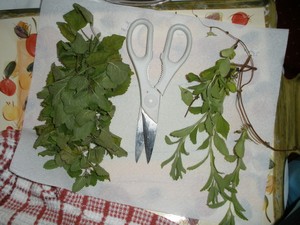 If you’ve never dried herbs before because the tasks seems too daunting, or your family members are fed up with trays of drying herbs everywhere, give small-batch drying a try.
If you’ve never dried herbs before because the tasks seems too daunting, or your family members are fed up with trays of drying herbs everywhere, give small-batch drying a try.
And that patch of herbs that needs to be tamed? Well, why not dry some of those herb clippings for winter use.
To your herb gardening success,
Barb
Copyright © 2013 www.HerbGardenGal.com. All rights reserved.

